Risks → War → Nuclear War → Nuclear Test Detonations
According to the Arms Control Association there have been a total of 2,056 nuclear test detonations, undertaken by 8 different countries, since the first explosion of a nuclear device in 1945 (Trinity test, Nevada, USA). Of these, 528 have been at or above ground level (atmospheric nuclear tests) with a total yield of approx. 540 megatons (Mts) and 1,528 tests undertaken underground, with a total yield of approx. 90 Mt. Only five countries, the USA, Russia, China, France and the UK have conducted atmospheric nuclear tests.
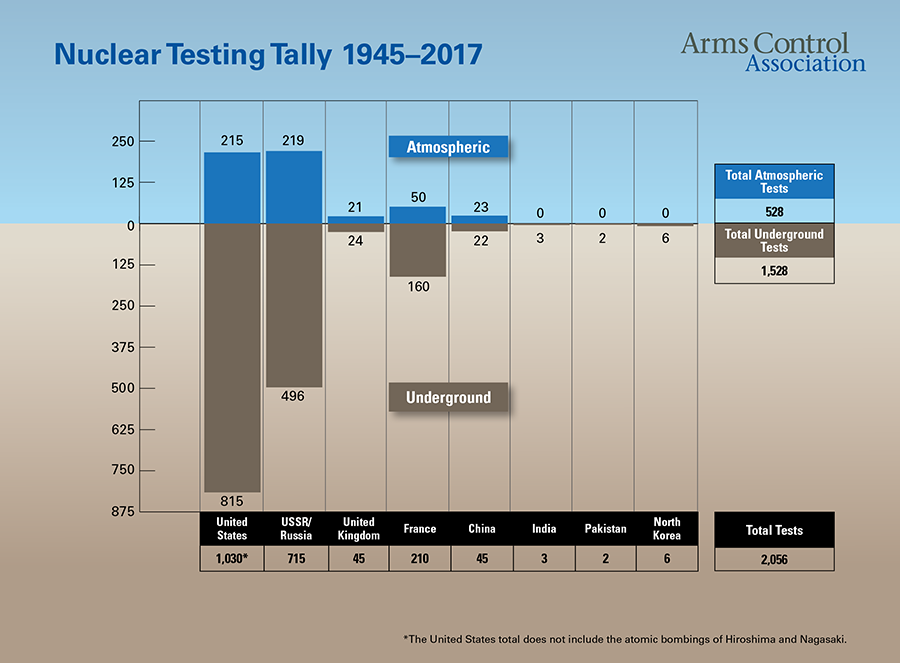
Nuclear testing tally 1945 - 2017
Source: Arms Control Association. See: https://www.armscontrol.org/factsheets/nucleartesttally
Test Locations
The infographic presented below shows the location, by country, of all nuclear tests sites since 1945.
Note, this graphic is compiled from test detonations recorded in Johnston's Archive. The number of tests recorded in this archive (2,388) differs markedly from the total detonations recorded by the Arms Control Association, particularly regarding the number of underground tests (1,900 compared to 1,528). The difference, comes primarily from the inclusion of safety tests and known zero yield events etc., in Johnston's Archive but are not recorded as full tests by the Arms Control Association. In contrast, Wikipedia records 2,121 tests and 2,476 devices detonated.
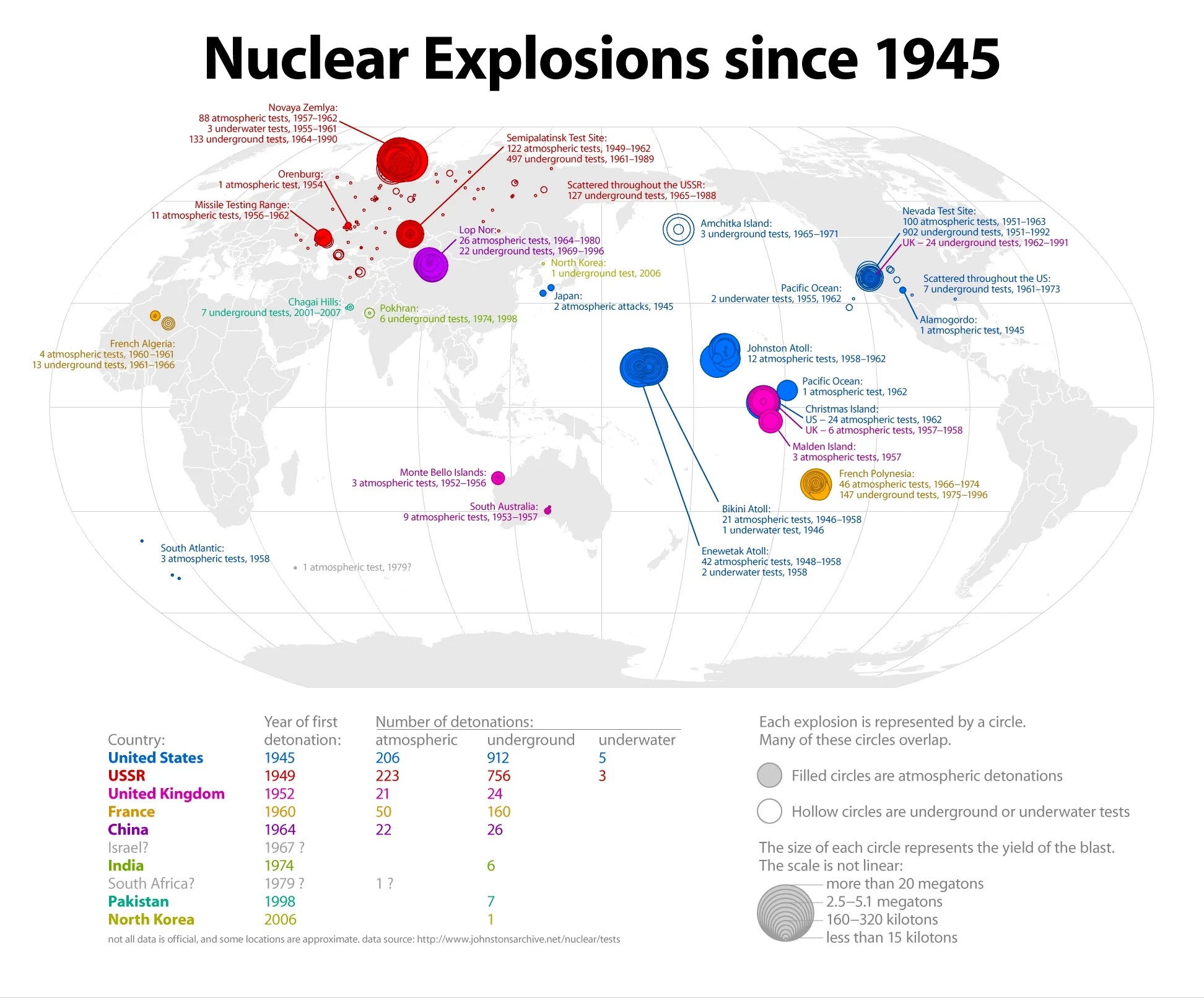
Nuclear test detonations 1945 - 2012
Source: sunfoundation. See: https://sunfoundation.tumblr.com/post/16703370361/nuclear-explosions-since-1945-this-infographic
Compiled from data in Jphnston's Archive, see: https://www.johnstonsarchive.net/nuclear/tests/index.html
USA
According to the Arms Control Association the USA has conducted at least 1,030 nuclear test detonations (official count from the US Department of Energy is 1,054, as quoted in Wikipedia), the most of any nation, 215 atmospheric (including underwater and space) and 815 underground. Test locations were mainly at its Nevada test site in the USA but also on the Bikini, Enewetak and Johnston Atolls and Christmas Island in the Pacific Ocean. The largest device detonated was the Castle Bravo explosion (15 Mt) on 1 March, 1954 at Bikini Atoll in the Pacific. Its last test (a safety test) was 23 September, 1992 at its Nevada Test Site.

Operation Crossroads Baker underwater Atom Bomb Test, July, 1946, Bikini Atoll 1.5 seconds after detonation, yield 23 kt
Source: Pixels.com. See: https://pixels.com/featured/operation-crossroads-atom-bomb-test-us-navyscience-photo-library.html
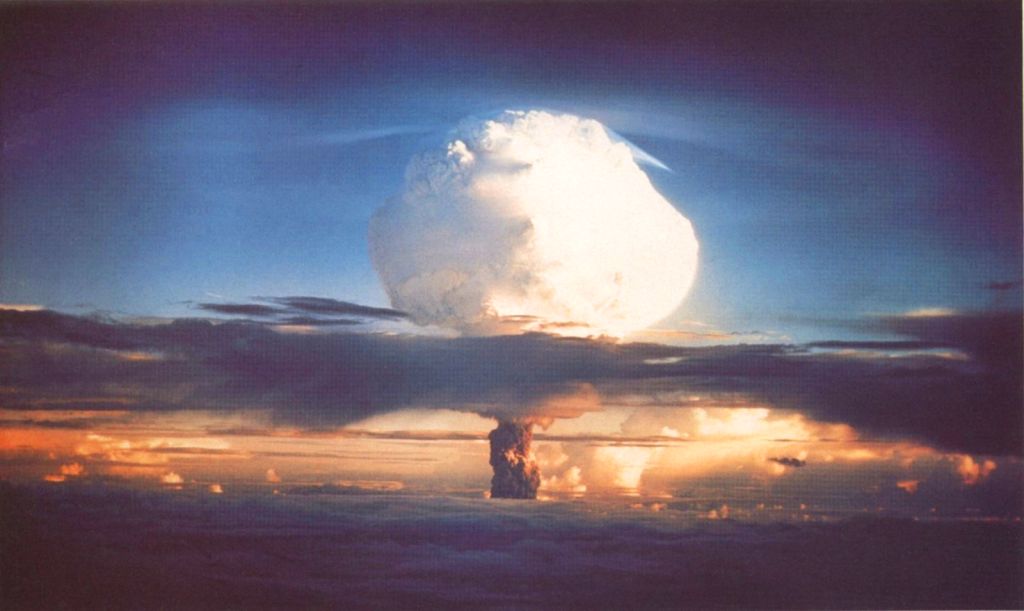
Ivy Mike nuclear test detonation, 31 October 1952, Elugelab Island, Enewetak Atoll, Pacific Ocean. Surface burst, yield 10.4 Mt
Ivy Mike was the first true H-Bomb (based on the Teller-Ulam principle) ever tested.
Source: Nuclear Weapons Archive. See: https://nuclearweaponarchive.org/Usa/Tests/Ivy.html
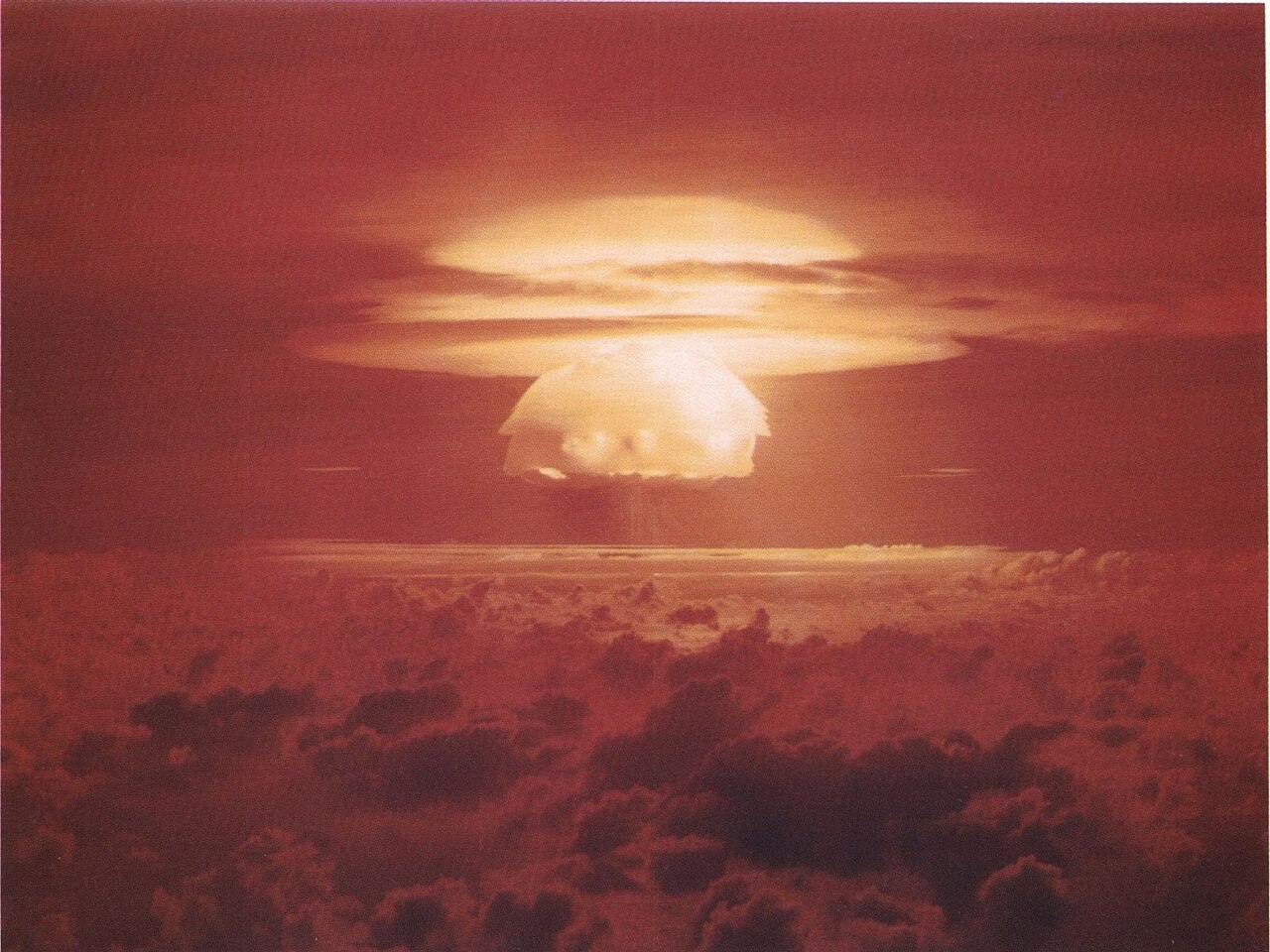
Castle Bravo nuclear test detonation, 1 March 1954, Bikini Atoll, Pacific Ocean, yield 15 Mt
Source: Nuclear Weapons Archive. See: https://nuclearweaponarchive.org/Usa/Tests/Castle.html
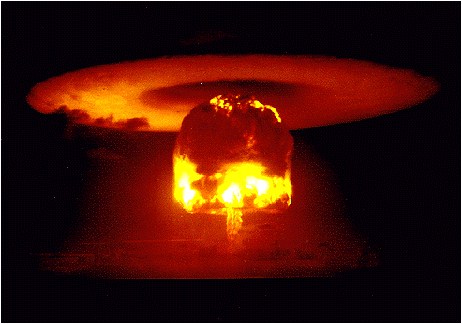
Castle Romeo nuclear test detonation, 26 March, 1954, Bikini Atoll, Pacific Ocean, yield 11 Mt
Source: Nuclear Weapons Archive. See: https://nuclearweaponarchive.org/Usa/Tests/Castle.html
Russia
Russia has undertaken 715 nuclear test detonation (official count), 219 atmospheric and 496 underground, mostly at the Semipalatinsk Test Site in Kazakhstan and Northern Test Site at Novaya Zemlya. Its first test was in August, 1949, its last in October, 1990. The most famous test, the Tsar Bomba, was undertaken 30 October, 1961. This bomb, the largest nuclear device ever detonated, was originally designed at a yield of 100 megaton but de-rated to 50 Mt for testing.
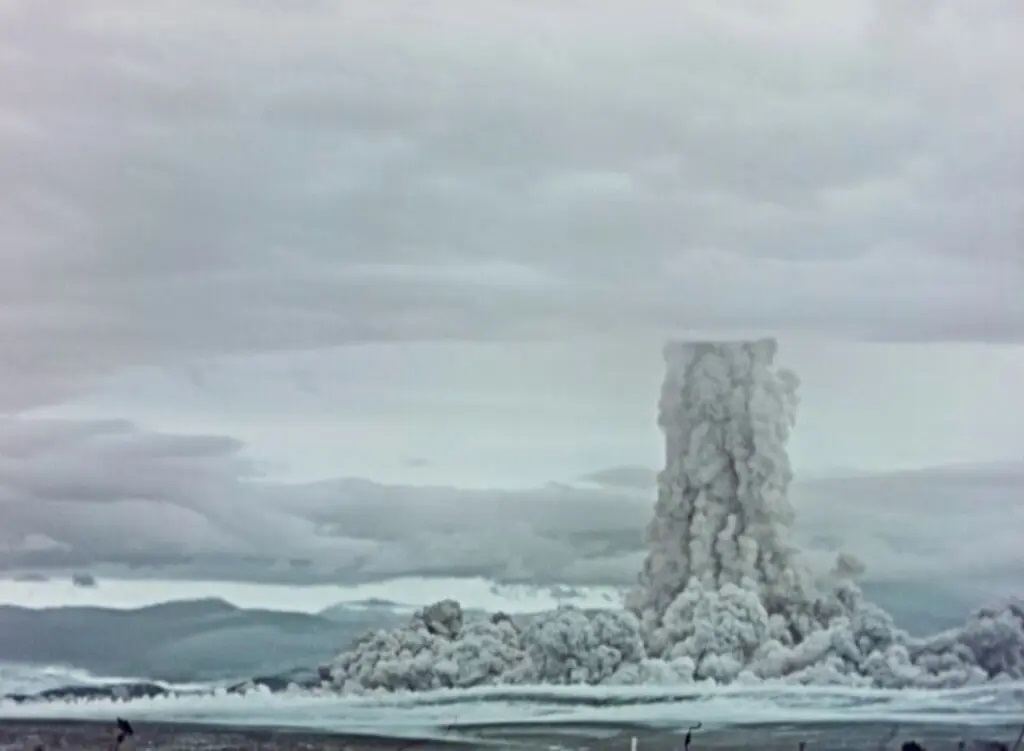
Detonation of the Tsar Bomba, Novaya Zemlya archipelago, Russia, 1961. Yield 50 megatons.
The largest nuclear weapon ever detonated.
Source: The New York Times. See: https://www.nytimes.com/2021/10/30/science/tsar-bomba-60.html
China
China has undertaken 45 nuclear tests, 23 atmospheric and 22 underground all at its Lop Nur military weapons test base, Malan, Xinjiang. Its last test was an underground explosion on 29 July, 1986.
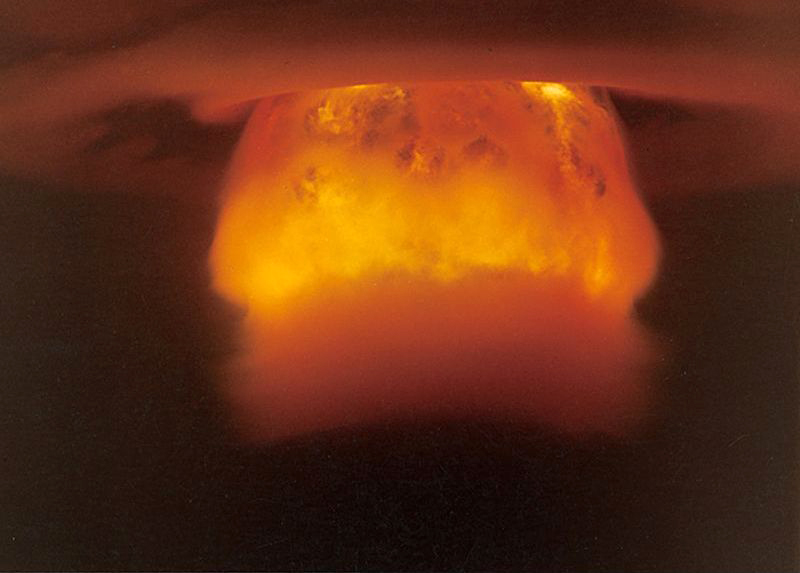
Test 6, Lop Nur test site, China, 17 June, 1967, yield 3.3 Megatons
Source: Atomic Archive. See: https://www.atomicarchive.com/media/photographs/testing/chinese/test-6-1.html
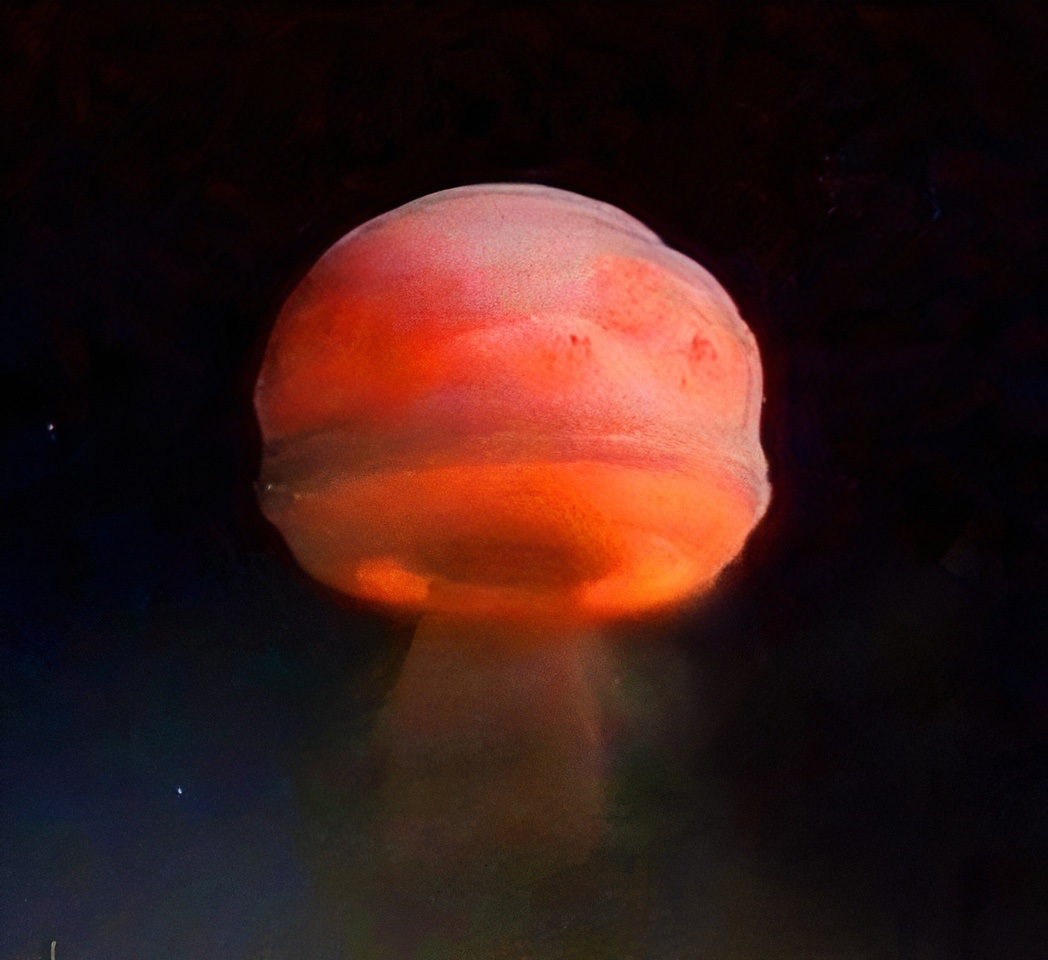
Test 21, Lop Nur test site, China, 17 November, 1976, yield 4 Megatons
Source: Atomic Archive. See: https://www.atomicarchive.com/media/photographs/testing/chinese/test-21-1.html
France
France has undertaken a total of 210 nuclear tests, 17 in the areas of Reggane and In Ekker in Algeria, the rest (193) in the Mururoa and Fangataufa Atolls in French Polynesia. 50 tests have been atmospheric and 160 underground. Its last test was on 27 January, 1996 in the Fangataufa Atoll, Pacific Ocean.
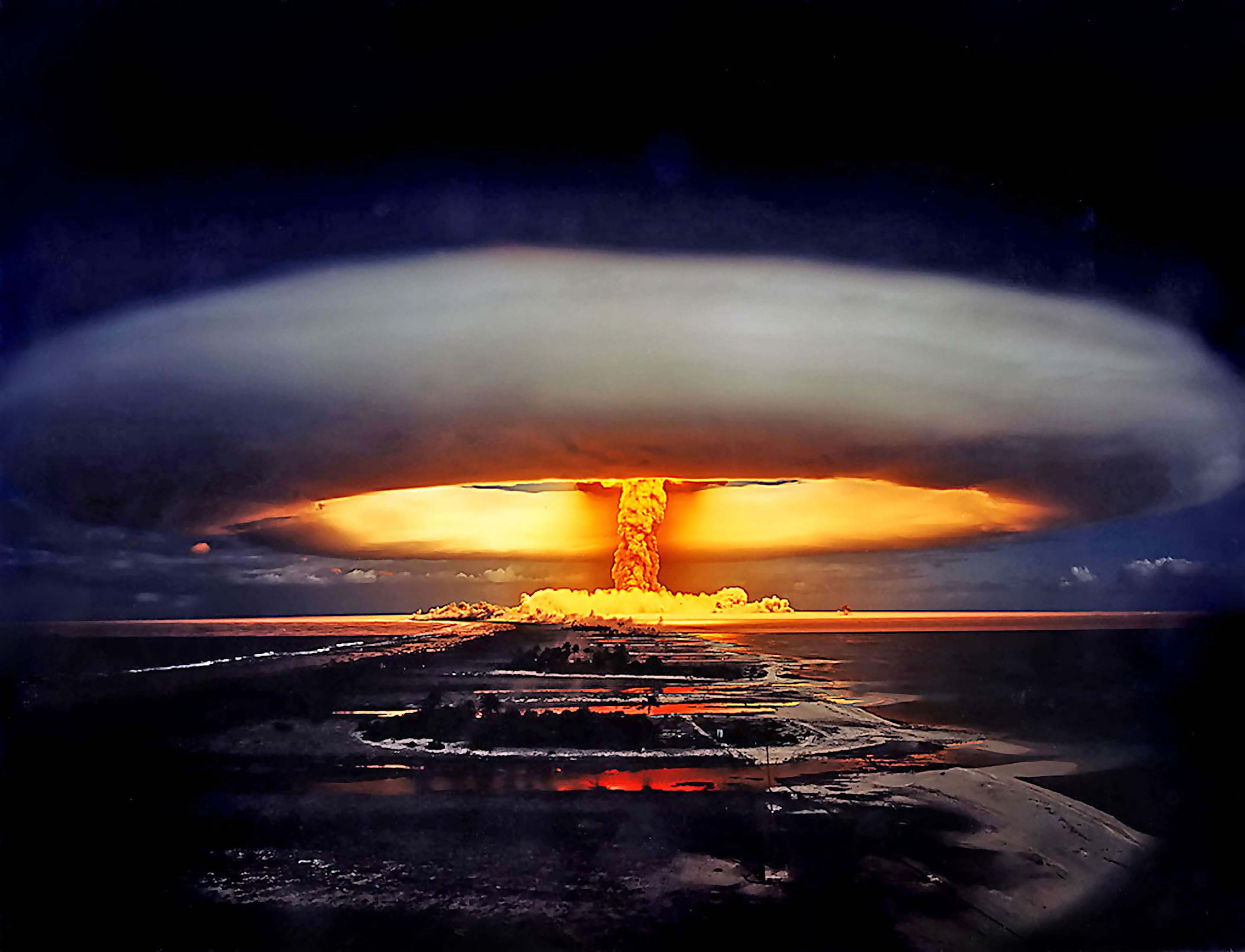
Test, 03 July 1970, Fangataufa Atoll, French Polynesia, Yield 914 kilotons
Source: atomicarchive.com. See: https://www.atomicarchive.com/media/photographs/testing/french/licorne.html
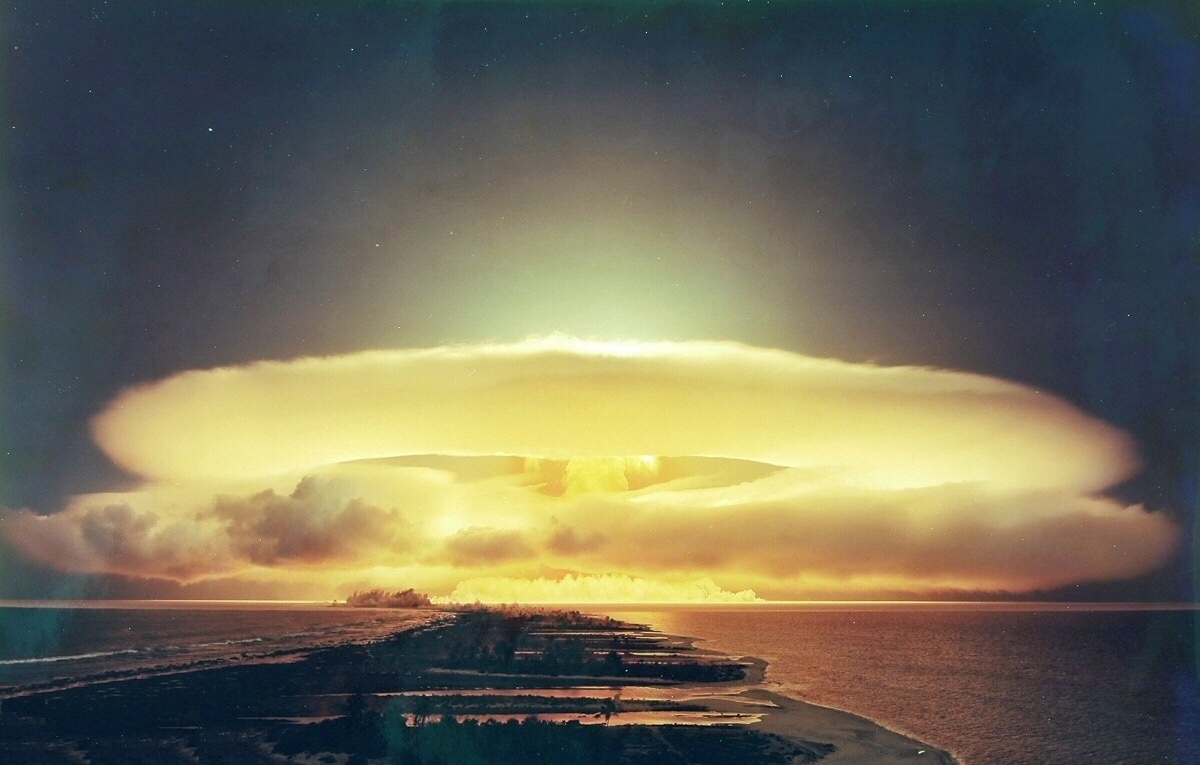
Test, 12 June 1971, Mururoa Atoll, French Polynesia, Yield 440 kilotons
Source: atomicarchive.com. See: https://www.atomicarchive.com/media/photographs/testing/french/encelade-2.html
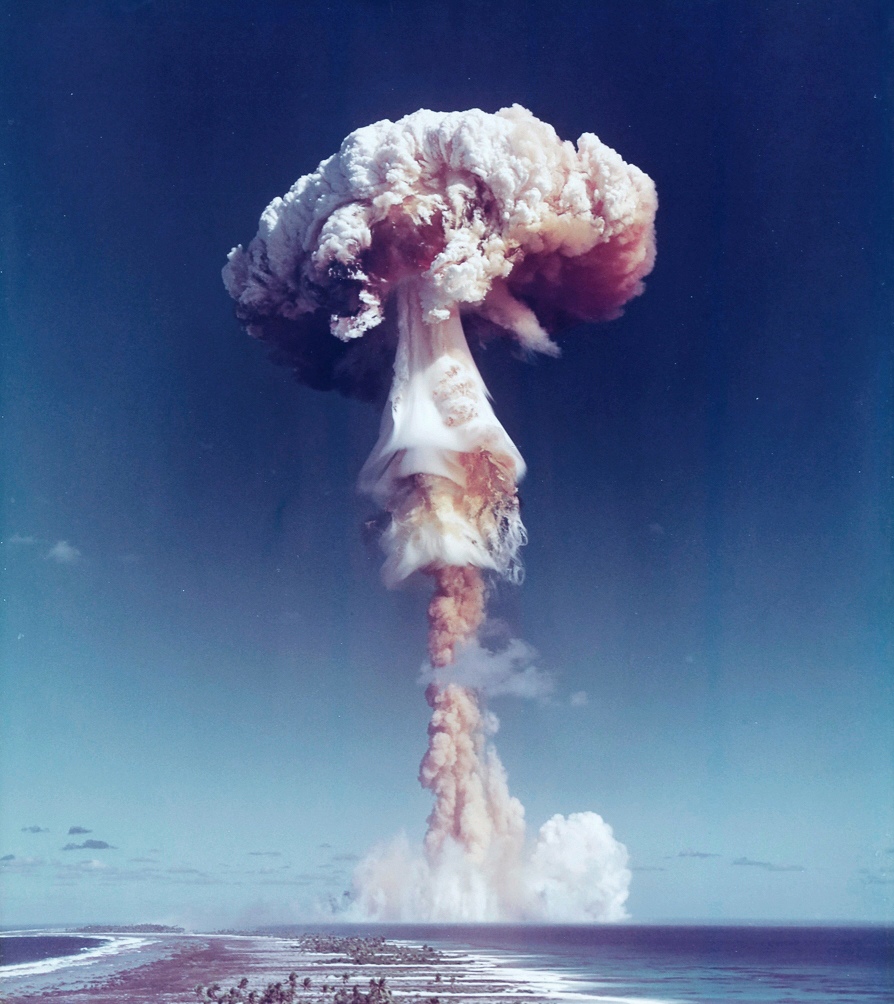
Test, 12 June 1971, Mururoa Atoll, French Polynesia, yield 440 kilotons
Source: atomicarchive.com. See: https://www.atomicarchive.com/media/photographs/testing/french/encelade-1.html
UK
The UK has undertaken 45 nuclear tests, 21 atmospheric and 24 underground. Its early testing (from 1952) was undertaken in Australia (3 in the Montebello Islands of Western Australia, 7 at Maralinga and Emu Field, South Australia). Later tests were in the Line Islands of the central Pacific. The UK has also undertaken 24 tests as part of a joint test series with the USA, using its Nevada test site. Its last test was in November, 1991.
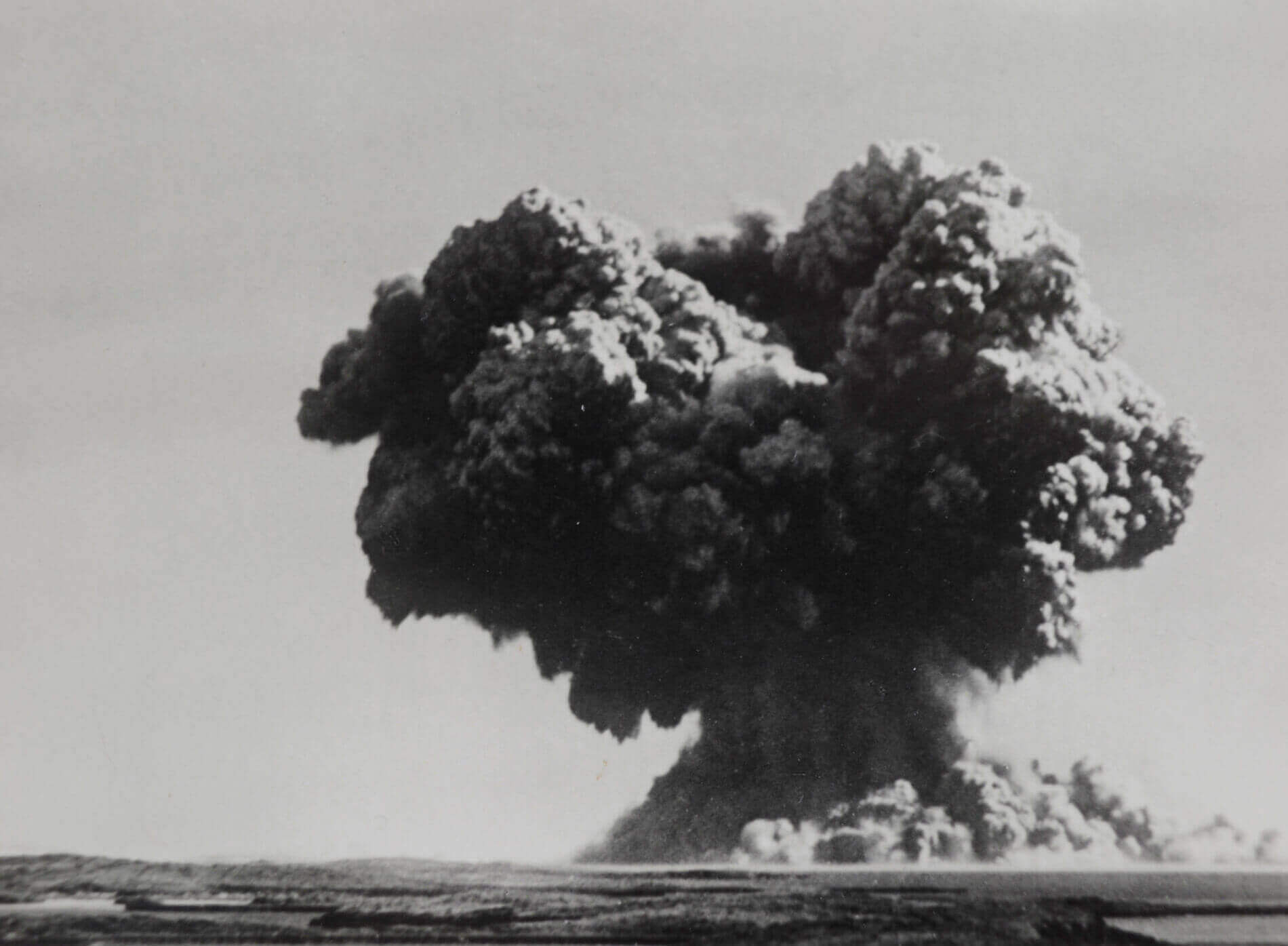
The UK's first nuclear test, code-named Hurricane, 3 October, 1952, Monte Belo Islands, Australia. Yield 25 kilotons.
Source: Atomic Archive, Cold War, Britain goes nuclear. See: https://www.atomicarchive.com/history/cold-war/page-10.html
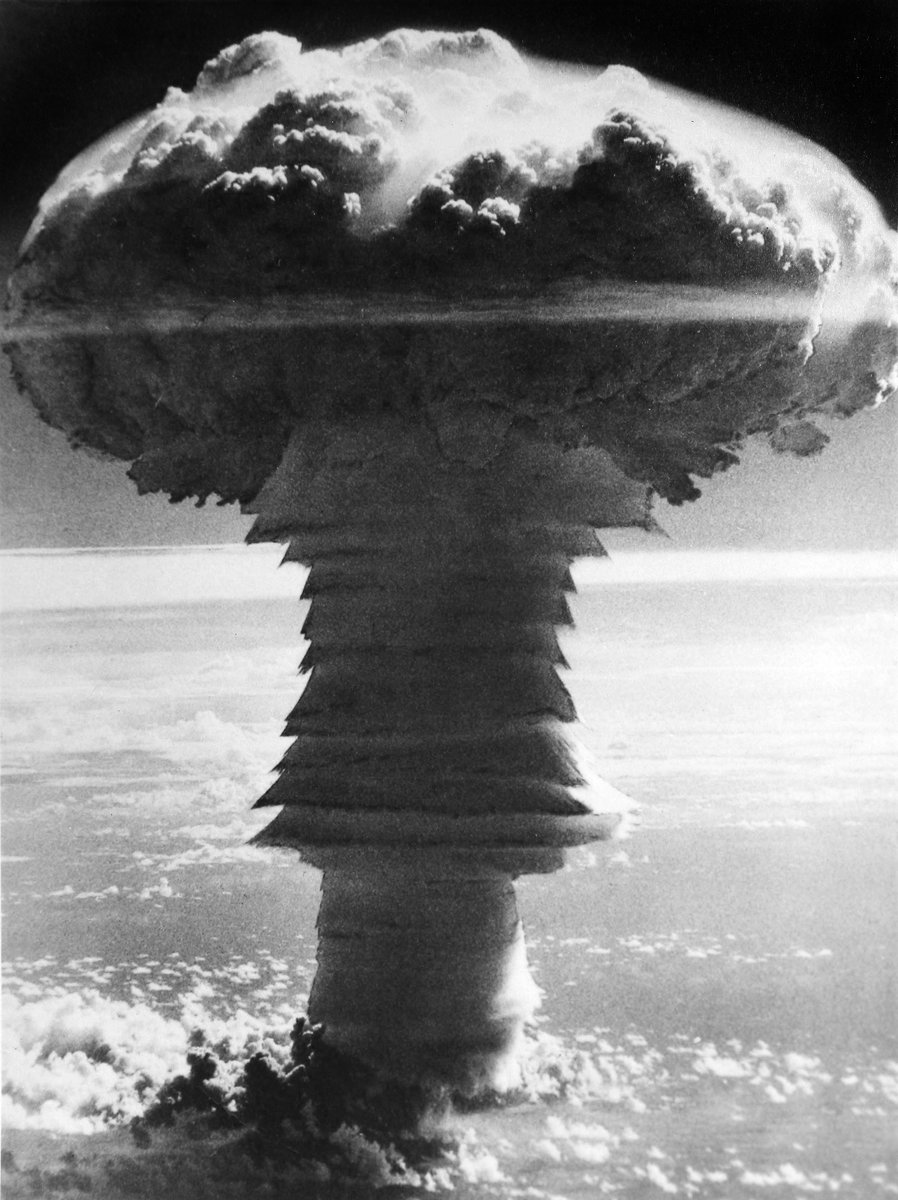
The UK's largest nuclear test, code-named Grapple Y, 28 April, 1958, Christmas Island, Yield 3 Megatons.
Source: Atomic Archive. See: https://www.atomicarchive.com/media/photographs/testing/uk/grapple-y-1.html